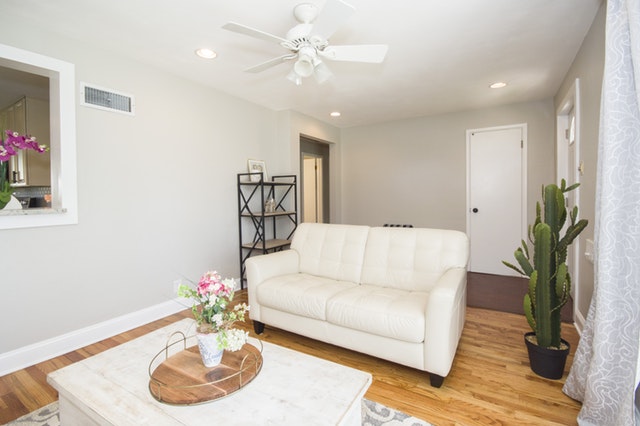 “Staging” a house means to prepare it for sale in ways that make it more attractive to potential buyers. Homeowners can do much of this staging work themselves and should get suggestions from their real estate agent. They can also hire a professional to do the staging work for them.
“Staging” a house means to prepare it for sale in ways that make it more attractive to potential buyers. Homeowners can do much of this staging work themselves and should get suggestions from their real estate agent. They can also hire a professional to do the staging work for them.
Value-Added Staging
A study of 4,200 sold homes, conducted by Home Staging Resource (HSR), found that 85% of the staged homes sold for 6% to 25% more than a home that was not staged.
Forbes reports that 95% of staged homes sell in 11 days or less. This is 87% faster when compared to the time it takes, on average, to sell a home that is not staged.
An average home sells for 10% to 20% less than the asking price. It may be even more beneficial to stage a home that would otherwise have to sell as a “fixer-upper.” When listing a home, which is in disrepair, the asking price must be at a steep discount from the market value of a similar home that is in a better condition. This steep discount may be reduced by staging the home properly.
The general rule-of-thumb is that every $100 dollar invested in staging may return up to $400 in a higher sales price.
Staging Priorities
The National Association of REALTORS® published the 2017 Profile of Home Staging, which says the staging priorities are:
- Declutter: Decluttering a home creates more open space that makes the home look bigger. Remove at least half of the items in the home and two-thirds of the stuff in the closets. De-personalize the home by removing photos, kid toys, items for pets, etc.
- Cleaning: The entire house needs to be immaculately clean, inside and out, to the level of a five-star hotel.
- Carpet Cleaning/Replacement: Carpet needs to look and smell like new or it should be replaced.
- No Pets or Children: Do not have children or pets in the home, when showing it to potential buyers.
- Renovations: Repairs, re-painting, and re-decorating should be done tastefully and by using neutral colors that appeal to most people.
- Rooms: Priority staging concentrates on these rooms, in this order: 1) Living Room; 2) Kitchen; 3) Master Bedroom and Bath, and 4) Dining Room.
- Vacant Home: A vacant home will probably sell much easier when staged using rented furniture.
Conclusion
Staging a home for sale makes perfect sense and is worth the investment of time, energy, and money. The benefits are that the home usually sells for a better price, probably sells more quickly, and the investment in staging usually makes a profit for the home seller. Consult your trusted real estate professional for guidance in selling your home quickly for a great price.
 Last week’s economic readings included readings from the National Association of Home Builders Housing Market Index, National Association of Realtors® report on sales of pre-owned homes and Commerce Department readings on housing starts and building permits issued. Weekly reports on mortgage rates and first-time jobless claims were also released.
Last week’s economic readings included readings from the National Association of Home Builders Housing Market Index, National Association of Realtors® report on sales of pre-owned homes and Commerce Department readings on housing starts and building permits issued. Weekly reports on mortgage rates and first-time jobless claims were also released. Picking out a new flooring can be exciting. After all, as anyone knows, new flooring in a home or business property can completely change the entire atmosphere. A common question asked by commercial and residential property owners is “Should I go with laminate or hardwood flooring?”
Picking out a new flooring can be exciting. After all, as anyone knows, new flooring in a home or business property can completely change the entire atmosphere. A common question asked by commercial and residential property owners is “Should I go with laminate or hardwood flooring?” The real estate market is quite different from other markets and can be confusing for even the most experienced buyers and sellers. You will need the help of a real estate agent whether you are an experienced buyer or doing it for the first time.
The real estate market is quite different from other markets and can be confusing for even the most experienced buyers and sellers. You will need the help of a real estate agent whether you are an experienced buyer or doing it for the first time. Your home’s energy rating is an evaluation of your home’s overall energy efficiency. If your house’s rating is high, it means your potential for energy loss is also high. Bringing your rating numbers down means that your home is becoming more energy efficient.
Your home’s energy rating is an evaluation of your home’s overall energy efficiency. If your house’s rating is high, it means your potential for energy loss is also high. Bringing your rating numbers down means that your home is becoming more energy efficient.  Last week’s economic news included readings on inflation, core inflation and retail sales. Weekly readings on mortgage rates and first-time jobless claims were also released.
Last week’s economic news included readings on inflation, core inflation and retail sales. Weekly readings on mortgage rates and first-time jobless claims were also released. Millennials face numerous challenges when buying their first homes. 55% of young adults between 25 and 34 years old don’t own homes as compared to 80% in 1967, according to data from the Census Bureau.
Millennials face numerous challenges when buying their first homes. 55% of young adults between 25 and 34 years old don’t own homes as compared to 80% in 1967, according to data from the Census Bureau.  So, as you make your annual resolutions or consider revamping your home, it’s worth knowing them. After all, we all adore coming back to a place that makes us happy and helps us disconnect from tough days at work.
So, as you make your annual resolutions or consider revamping your home, it’s worth knowing them. After all, we all adore coming back to a place that makes us happy and helps us disconnect from tough days at work.  It takes hard work to achieve the American Dream of homeownership. Everyday people work to save for a down payment and build a good credit score. When you turn the key to your first home or dream home, the sweat equity feels well worth it.
It takes hard work to achieve the American Dream of homeownership. Everyday people work to save for a down payment and build a good credit score. When you turn the key to your first home or dream home, the sweat equity feels well worth it. Last week’s scheduled economic news was slim last week. The Federal Open Market Committee of the Federal Reserve issued its post-meeting statement, weekly readings on average mortgage rates and first-time jobless claims were also issued.
Last week’s scheduled economic news was slim last week. The Federal Open Market Committee of the Federal Reserve issued its post-meeting statement, weekly readings on average mortgage rates and first-time jobless claims were also issued.